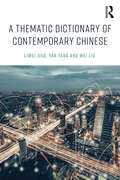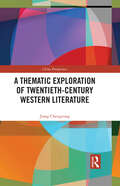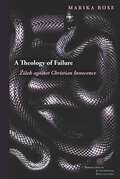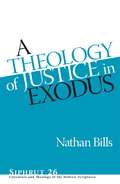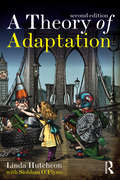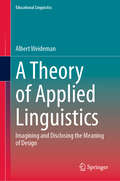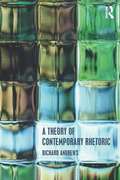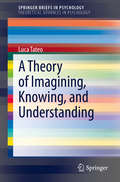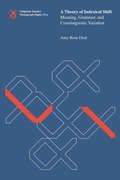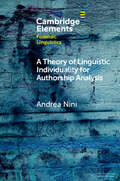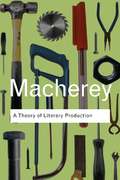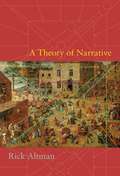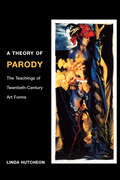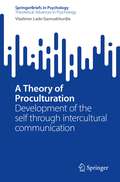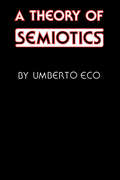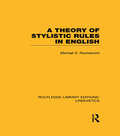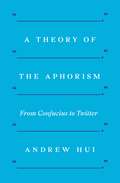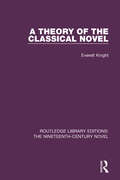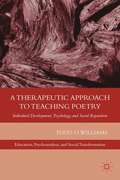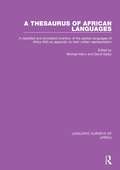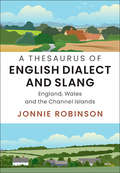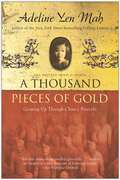- Table View
- List View
A Thematic Dictionary of Contemporary Chinese
by Wei Liu Yan Yang Liwei JiaoA Thematic Dictionary of Contemporary Chinese is a unique resource for intermediate to advanced students of Chinese. The dictionary presents 9,000 words organized thematically in 300 different subject areas. These themes cover the vocabulary necessary for daily use and for conducting meaningful conversations with native Chinese speakers on a variety of topics, from politics to business, and from hobbies to education. Each vocabulary item is annotated with the most frequent collocations allowing learners to improve their fluency by storing new vocabulary in larger linguistic units. Cultural and linguistic tips enable learners to grasp the vocabulary more effectively and increase their awareness of Chinese culture embedded in the language. Review exercises are provided throughout to ensure learners have ample opportunity to practice the new material. This is a great resource for both independent study and classroom use and will be of interest to students and teachers of Chinese alike. For further understanding of Chinese expressions, students are encouraged to read 500 Common Chinese Proverbs and Colloquial Expressions and 500 Common Chinese Idioms.
A Thematic Exploration of Twentieth-Century Western Literature (China Perspectives)
by Jiang ChengyongThe twentieth century witnessed dramatic changes in terms of the structure of society, economics, politics, science and technology, driving a change in western literature from traditional to modern: old value systems were shattered; writing approaches and aesthetics changed; writers began to explore the psychological world and expand the discussion of man and modern civilization. This title takes classic literature by European and American authors of the twentieth-century as research objects in order to comprehensively explore their thoughts, values, aesthetics and narratives. Six major themes are used as units for analysis—existential meaning, self-identity, war and human nature, growing confusion, love and marriage, and anti-Utopia. The authors argue that the six themes extend the themes of traditional literature and epitomize the unique characteristics of twentieth-century western literature. The book will be of interest to students and scholars of literature, especially Western literature and twentieth-century literature.
A Theology of Failure: Žižek against Christian Innocence (Perspectives in Continental Philosophy)
by Marika RoseEveryone agrees that theology has failed; but the question of how to understand and respond to this failure is complex and contested. Against both the radical orthodox attempt to return to a time before the theology’s failure and the deconstructive theological attempt to open theology up to the hope of a future beyond failure, Rose proposes an account of Christian identity as constituted by, not despite, failure. Understanding failure as central to theology opens up new possibilities for confronting Christianity’s violent and kyriarchal history and abandoning the attempt to discover a pure Christ outside of the grotesque materiality of the church.The Christian mystical tradition begins with Dionysius the Areopagite’s uncomfortable but productive conjunction of Christian theology and Neoplatonism. The tensions generated by this are central to Dionysius’s legacy, visible not only in subsequent theological thought but also in much twentieth century continental philosophy as it seeks to disentangle itself from its Christian ancestry. A Theology of Failure shows how the work of Slavoj Žižek represents an attempt to repeat the original move of Christian mystical theology, bringing together the themes of language, desire, and transcendence not with Neoplatonism but with a materialist account of the world. Tracing these themes through the work of Dionysius and Derrida and through contemporary debates about the gift, violence, and revolution, this book offers a critical theological engagement with Žižek's account of social and political transformation, showing how Žižek's work makes possible a materialist reading of apophatic theology and Christian identity.
A Theology of Justice in Exodus (Siphrut)
by Nathan BillsThis book traces the theme of justice throughout the narrative of Exodus in order to explicate how yhwh’s reclamation of Israel for service-worship reveals a distinct theological ethic of justice grounded in yhwh’s character and Israel’s calling within yhwh’s creational agenda.Adopting a synchronic, text-immanent interpretive strategy that focuses on canonical and inner-biblical connections, Nathan Bills identifies two overlapping motifs that illuminate the theme of justice in Exodus. First, Bills considers the importance of Israel’s creation traditions for grounding Exodus’s theology of justice. Reading Exodus against the backdrop of creation theology and as a continuation of the plot of Genesis, Bills shows that the ethical disposition of justice imprinted on Israel in Exodus is an application of yhwh’s creational agenda of justice. Second, Bills identifies an educational agenda woven throughout the text. The narrative gives heightened attention to the way yhwh catechizes Israel in what it means to be the particular beneficiary and creational emissary of yhwh’s justice. These interpretative lenses of creation theology and pedagogy help to explain why Israel’s salvation and shaping embody a programmatic applicability of yhwh’s justice for the wider world.This volume will be of substantial interest to divinity students and religious professionals interested in the themes of exodus, exile, and return.
A Theology of Justice in Exodus (Siphrut: Literature and Theology of the Hebrew Scriptures #26)
by Nathan BillsThis book traces the theme of justice throughout the narrative of Exodus in order to explicate how yhwh’s reclamation of Israel for service-worship reveals a distinct theological ethic of justice grounded in yhwh’s character and Israel’s calling within yhwh’s creational agenda.Adopting a synchronic, text-immanent interpretive strategy that focuses on canonical and inner-biblical connections, Nathan Bills identifies two overlapping motifs that illuminate the theme of justice in Exodus. First, Bills considers the importance of Israel’s creation traditions for grounding Exodus’s theology of justice. Reading Exodus against the backdrop of creation theology and as a continuation of the plot of Genesis, Bills shows that the ethical disposition of justice imprinted on Israel in Exodus is an application of yhwh’s creational agenda of justice. Second, Bills identifies an educational agenda woven throughout the text. The narrative gives heightened attention to the way yhwh catechizes Israel in what it means to be the particular beneficiary and creational emissary of yhwh’s justice. These interpretative lenses of creation theology and pedagogy help to explain why Israel’s salvation and shaping embody a programmatic applicability of yhwh’s justice for the wider world.This volume will be of substantial interest to divinity students and religious professionals interested in the themes of exodus, exile, and return.
A Theory of Adaptation
by Linda HutcheonA Theory of Adaptation explores the continuous development of creative adaptation, and argues that the practice of adapting is central to the story-telling imagination. Linda Hutcheon develops a theory of adaptation through a range of media, from film and opera, to video games, pop music and theme parks, analysing the breadth, scope and creative possibilities within each. This new edition is supplemented by a new preface from the author, discussing both new adaptive forms/platforms and recent critical developments in the study of adaptation.? It also features an illuminating new epilogue from Siobhan O’Flynn, focusing on adaptation in the context of digital media. She considers the impact of transmedia practices and properties on the form and practice of adaptation, as well as studying the extension of game narrative across media platforms, fan-based adaptation (from Twitter and Facebook to home movies), and the adaptation of books to digital formats. A Theory of Adaptation is the ideal guide to this ever evolving field of study and is essential reading for anyone interested in adaptation in the context of literary and media studies.
A Theory of Applied Linguistics: Ιmagining and Disclosing the Meaning of Design (Educational Linguistics #65)
by Albert WeidemanThis book adopts as conceptual focus the technical mode of experience, exploring this characteristic mode of design as the angle from which the discipline of applied linguistics takes its cue. What makes applied linguistic concept formation possible? A number of elementary concepts and ideas are so basic to the discipline that they can neither be ignored nor avoided. These ‘primitives’ are identified by examining the connections among the technical and other modalities, such as the spatial, the physical, the social, economic, aesthetic, juridical and the ethical. A theory of applied linguistics must be robust enough to do justice to different modernist and postmodernist paradigms operating in the discipline, systematically identifying and assessing their strengths and blind spots. The book offers a response to the question of the usefulness of theory. The principles of design revealed in the theoretical analysis are given shape in developing imaginative language interventions to solve vexing language problems not for the sake of theory, but for the benefit of those affected. The book is intended for use both as a reference and as a comprehensive, unifying perspective of what the field is, by scholars in applied linguistics and related fields (TESOL, ESL, ESP, EAP, SLA studies, language assessment and testing, language policy development), by postgraduate students or those who teach or study applied linguistics.
A Theory of Contemporary Rhetoric
by Richard AndrewsA Theory of Contemporary Rhetoric describes, explains, and argues the overarching theory of contemporary rhetoric. This current view of rhetoric brings together themes in the communication arts, including political literary criticism; bi- and multi-lingualism; multimodality; framing as an artistic and sociological device for composition and interpretation; literacy in the digital age; and the division between fiction and ‘non-fiction’ in language/literature studies. Chapters explore the implications of rhetoric for particular aspects of the field. Discussions throughout the book provide illustrations that ground the material in practice. As an overarching theory in the communication arts, rhetoric is elegant as a theoretical solution and simple as a practical one. It asks such questions as who is speaking/writing/composing? to whom? why? what is being conveyed? and how is it being conveyed? Acknowledging the dirth of recent works addressing the theory of rhetoric, this book aims to fill the existing theoretical gap and at the same time move the field of language/literature studies forward into new territory. It provides the keynote theoretical guide for a generation of teachers, teacher educators and researchers in the fields of English as a subject; English as a second, foreign or additional language; and language study in general.
A Theory of History (Routledge Library Editions: Historiography)
by Agnes HellerThis radical analysis of the role and importance of historiography interprets the philosophy and theory of history on the basis of historicity as a human condition. The book examins the norms and methods of historiography from a philosophical point of view, but rejects generalisations tht the philosophy of history can provide all the answers to contemporary problems. Instead it outlines a feasible theory of history which is still radical enough to apply to all social structures.
A Theory of Imagining, Knowing, and Understanding (SpringerBriefs in Psychology)
by Luca TateoThis is a book about imaginative work and its relationship with the construction of knowledge. It is fully acknowledged by epistemologists that imagination is not something opposed to rationality; it is not mere fantasy opposed to intellect. In philosophy and cognitive sciences, imagination is generally “delimiting not much more than the mental ability to interact cognitively with things that are not now present via the senses.” (Stuart, 2017, p. 11) For centuries, scholars and poets have wondered where this capability could come from, whether it is inspired by divinity or it is a peculiar feature of human mind (Tateo, 2017b). The omnipresence of imaginative work in both every day and highly specialized human activities requires a profoundly radical understanding of this phenomenon. We need to work imaginatively in order to achieve knowledge, thus imagination must be something more than a mere flight of fantasy. Considering different stories in the field of scientific endeavor, I will try to propose the idea that the imaginative process is fundamental higher mental function that concurs in our experiencing, knowing and understanding the world we are part of. This book is thus about a theoretical idea of imagining as constant part of the complex whole we call the human psyche. It is a story of human beings striving not only for knowledge and exploration but also striving for imagining possibilities.
A Theory of Indexical Shift: Meaning, Grammar, and Crosslinguistic Variation (Linguistic Inquiry Monographs #82)
by Amy Rose DealA comprehensive overview of the semantics and syntax of indexical shift that develops a constrained typology of the phenomenon across languages.The phenomenon of indexical shift--whereby indexicals embedded in speech or attitude reports draw their meaning from an attitude event rather than the utterance context--has been reported in languages spanning five continents and at least ten language families. In this book, Amy Rose Deal offers a comprehensive overview of the semantics and syntax of indexical shift and develops a constrained typology of the phenomenon across languages--a picture of variation that is both rich enough to capture the known facts and restrictive enough to make predictions about currently unknown data points.
A Theory of Linguistic Individuality for Authorship Analysis (Elements in Forensic Linguistics)
by Andrea NiniAuthorship analysis is the process of determining who produced a questioned text by language analysis. Although there has been significant success in the performance of computational methods to solve this problem in recent years, these are often methods that are not amenable to interpretation. Authorship analysis is in all effects an area of computer science with very little linguistics or cognitive science. This Element introduces a Theory of Linguistic Individuality that, starting from basic notions of cognitive linguistics, establishes a formal framework for the mathematical modelling of language processing that is then applied to three computational experiments, including using the likelihood ratio framework. The results propose new avenues of research and a change of perspective in the way authorship analysis is currently carried out.
A Theory of Literary Production
by Pierre MachereyWho is more important: the reader, or the writer? Originally published in French in 1966, Pierre Macherey’s first and most famous work, A Theory of Literary Production dared to challenge perceived wisdom, and quickly established him as a pivotal figure in literary theory. The reissue of this work as a Routledge Classic brings some radical ideas to a new audience, and argues persuasively for a totally new way of reading. As such, it is an essential work for anyone interested in the development of literary theory.
A Theory of Narrative
by Rick AltmanNarrative is a powerful element of human culture, storing and sharing the cherished parts of our personal memories and giving structure to our laws, entertainment, and history. We experience narrative in words, pictures, and film, yet regardless of how the tale is told, story remains independent from the media that makes it concrete. Narrative follows humans wherever they travel and adapts readily to new forms of communication. Constantly evolving and always up-to-date, narrative is a necessary strategy of human expression and a fundamental component of human identity.In order to understand human interaction, award-winning scholar Rick Altman launches a close study of narrative's nature, its variation in different contexts, and the method through which it makes meaning. Altman's approach breaks away from traditional forms of analysis, identifying three basic strategies: single-focus, dual-focus, and multiple-focus. Unpacking an intentionally diverse selection of texts, Altman demonstrates how these strategies function in context and illustrates their theoretical and practical applications in terms of textual analysis, literary and film history, social organization, religion, and politics. He employs inventive terminology and precise analytical methods throughout his groundbreaking work, making this volume ideal for teaching literary and film theory and for exploring the anatomy of narrative on a more general level.
A Theory of Parody: The Teachings of Twentieth-Century Art Forms
by Linda HutcheonIn this major study of a flexible and multifaceted mode of expression, Linda Hutcheon looks at works of modern literature, visual art, music, film, theater, and architecture to arrive at a comprehensive assessment of what parody is and what it does. Hutcheon identifies parody as one of the major forms of modern self-reflexivity, one that marks the intersection of invention and critique and offers an important mode of coming to terms with the texts and discourses of the past. Looking at works as diverse as Tom Stoppard's Rosenkrantz and Guildenstern Are Dead, Brian de Palma's Dressed to Kill, Woody Allen's Zelig, Karlheinz Stockhausen's Hymnen, James Joyce's Ulysses, and Magritte's This Is Not a Pipe, Hutcheon discusses the remarkable range of intent in modern parody while distinguishing it from pastiche, burlesque, travesty, and satire. She shows how parody, through ironic playing with multiple conventions, combines creative expression with critical commentary. Its productive-creative approach to tradition results in a modern recoding that establishes difference at the heart of similarity. In a new introduction, Hutcheon discusses why parody continues to fascinate her and why it is commonly viewed as suspect-–for being either too ideologically shifty or too much of a threat to the ownership of intellectual and creative property.
A Theory of Proculturation: Development of the self through intercultural communication (SpringerBriefs in Psychology)
by Vladimer Lado GamsakhurdiaIn each connection with new cultural contexts a new hybrid state of cultural adaptation is constructed enabling people to adjust to new conditions by creating innovative solutions for the self. This book aims to provide a brief presentation of innovative cultural psychological theory of proculturation reflecting and oriented on the understanding of semiotic and developmental dynamics of higher mental phenomena while engaging alien signs through intercultural communication. The exploration and theoretical understanding of developmental dynamics (such as self and identity construction) of people who live in immigration or multicultural, or even multi-ethnic societies, the research builds its new focus in contrasts with the acculturation theories currently present in social psychology. The theory of proculturation has been built in opposition to cross-cultural psychological theories as well as mainstream theories of acculturation research dominated by bidimensional theoretical models. Instead, this theory is constructed based on theoretical explorations which are rooted in cultural semiotics and developmental psychological paradigm on human psychology.
A Theory of Semiotics (Advances in Semiotics)
by Umberto Eco" . . . the greatest contribution to [semiotics] since the pioneering work of C. S. Peirce and Charles Morris." —Journal of Aesthetics and Art Criticism" . . . draws on philosophy, linguistics, sociology, anthropology and aesthetics and refers to a wide range of scholarship . . . raises many fascinating questions." —Language in Society" . . . a major contribution to the field of semiotic studies." —Robert Scholes, Journal of Aesthetics and Art Criticism" . . . the most significant text on the subject published in the English language that I know of." —Arthur Asa Berger, Journal of CommunicationEco's treatment demonstrates his mastery of the field of semiotics. It focuses on the twin problems of the doctrine of signs—communication and signification—and offers a highly original theory of sign production, including a carefully wrought typology of signs and modes of production.
A Theory of Stylistic Rules in English (Routledge Library Editions: Linguistics)
by Michael RochemontThis book defends in part a particular elaboration of the stylistic rule component of the grammatical model first presented in Chomsky and Lasnik (1977). It is argued that stylistic rules share a number of fundamental properties, most significantly that they characterize noncanonical focusing constructions and that they make no contribution to the logical forms (LFs) of sentences they apply to in particular regard to truth conditional interpretation. The work includes a discussion of Auxiliary Inversion constructions in English, arguing that these constructions also sometimes involve focusing, though not stylistic. An approach to the interpretation of these sentences is suggested, employing a concept of interpretative templates: rules relating S-structure and LF for which some independent evidence is suggested.
A Theory of the Aphorism: From Confucius to Twitter
by Andrew HuiAn engaging look at the aphorism, the shortest literary form, across time, languages, and culturesAphorisms—or philosophical short sayings—appear everywhere, from Confucius to Twitter, the Buddha to the Bible, Heraclitus to Nietzsche. Yet despite this ubiquity, the aphorism is the least studied literary form. What are its origins? How did it develop? How do religious or philosophical movements arise from the enigmatic sayings of charismatic leaders? And why do some of our most celebrated modern philosophers use aphoristic fragments to convey their deepest ideas? In A Theory of the Aphorism, Andrew Hui crisscrosses histories and cultures to answer these questions and more.With clarity and precision, Hui demonstrates how aphorisms—ranging from China, Greece, and biblical antiquity to the European Renaissance and nineteenth century—encompass sweeping and urgent programs of thought. Constructed as literary fragments, aphorisms open new lines of inquiry and horizons of interpretation. In this way, aphorisms have functioned as ancestors, allies, or antagonists to grand systems of philosophy.Encompassing literature, philology, and philosophy, the history of the book and the history of reading, A Theory of the Aphorism invites us to reflect anew on what it means to think deeply about this pithiest of literary forms.
A Theory of the Classical Novel (Routledge Library Editions: The Nineteenth-Century Novel #23)
by Everett KnightFirst published in 1969, this book asserts that two concepts, structure and praxis, make it impractical for scholars to ignore the necessity of a theory of the novel — with the term ‘classical novel’ used to cover western fiction. The author argues that the novel is fundamentally an ‘enterprise’ — an aspect of the praxis of a particular social class — and that the ways of orthodox scholarship are also a praxis. The investigator must enquire into the nature of their questions as those traditionally put to literature are inspired by ‘irrelevant’ nineteenth century positivism. In the author’s view the book is necessarily a theory of the classical novel and a manifesto for the student movement.
A Therapeutic Approach To Teaching Poetry
by Todd O. WilliamsExplains how the study of poetry, by providing experiences similar to those produced by poetry therapy, can help students discover themselves and develop their potential to effect change in the world.
A Thesaurus of African Languages: A Classified and Annotated Inventory of the Spoken Languages of Africa With an Appendix on Their Written Representation (Linguistic Surveys of Africa #1)
by Michael Mann David DalbyOriginally published in 1987, this thesaurus is concerned with the spoken languages of Africa. Languages are grouped into a relatively large number of sets and subsets within which the relationship of languages to one another is locally apparent and uncontroversial. The volume presents the languages in classified order with notes on each language, their variant names and immediate classification, and reference to the sources consulted. One section offers an exhaustive list of the languages spoken as home languages by local communities in each state, together with details of languages widely used for inter-group communication, given official recognition, or used in education or the media. There are brief phonological analyses of a broad sample of some 20 African languages and a comprehensive bibliography and language index to the whole work
A Thesaurus of English Dialect and Slang: England, Wales and the Channel Islands
by Jonnie RobinsonA thesaurus of present-day vernacular English from Berwick-upon-Tweed to the Channel Islands, this unique record of everyday English celebrates established regional dialects, emerging new varieties and colloquial forms young and old. Based on a prestigious nationwide survey, BBC Voices Recordings, it documents the linguistic landscape of England, Wales and the Channel Islands in the 21st century, and includes over 3000 separate entries, drawn from over 200 locations across the country. Each entry contains information about the term's origins, location and the social distribution of its users. With links to original sound files and cross-references to complementary dictionary sources, it is an authoritative reference work for academic linguists, but its accessible presentation also makes it suitable for creative audiences and non-specialist language enthusiasts seeking authentic, up-to-date information on British English dialect and slang, and for English language teachers and learners as an invaluable educational tool.
A Thousand Pieces of Gold: Growing Up Through China's Proverbs
by Adeline Yen MahIn this poignant memoir the New York Times bestselling author of Falling Leaves, Adeline Yen Mah, provides a fascinating window into the history and cultural soul of China. Combining personal reflections, rich historical insights, and proverbs handed down to her by her grandfather, Yen Mah shares the wealth of Chinese civilization with Western readers. Exploring the history behind the proverbs, she delves into the lives of the first and second emperors and the two rebel warriors who changed the course of Chinese life, adding stories from her own life to beautifully illustrate their relevance and influence today.
A Thousand Splendid Suns (Play Script): Based on the novel by Khaled Hosseini
by Ursula Rani SarmaThe script for the stage production of the bestselling Khaled Hosseini novel A Thousand Splendid Suns, as adapted by playwright Ursula Rani Sarma.Born a generation apart and with very different ideas about love and family, Mariam and Laila are two women brought jarringly together by war, by loss, and by fate. As they endure the ever-escalating dangers around them--in their home, as well as in the streets of Kabul--they come to form a bond that makes them both sisters and mother-daughter to each other, and that will ultimately alter the course not just of their own lives but of the next generation. With heart-wrenching power and suspense, playwright Ursula Rani Sarma reimagines Hosseini's novel to show how a woman's love for her family can move her to shocking and heroic acts of self-sacrifice, and that in the end it is love, or even the memory of love, that is often the key to survival.A stunning accomplishment, this reimagination of A Thousand Splendid Suns is a haunting, heartbreaking, compelling production about unlikely friendship and indestructible love.This adaptation was first performed by the American Conservatory Theater in San Francisco in February 2017.
